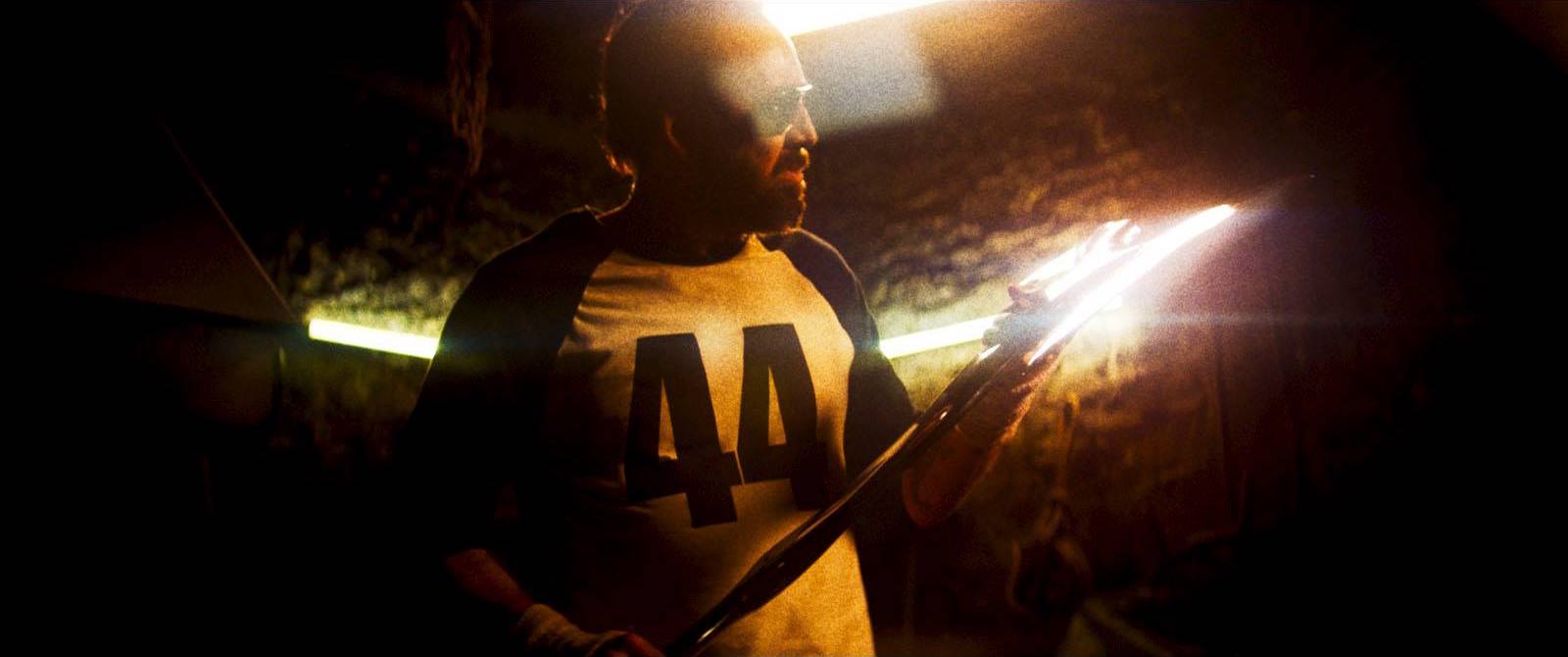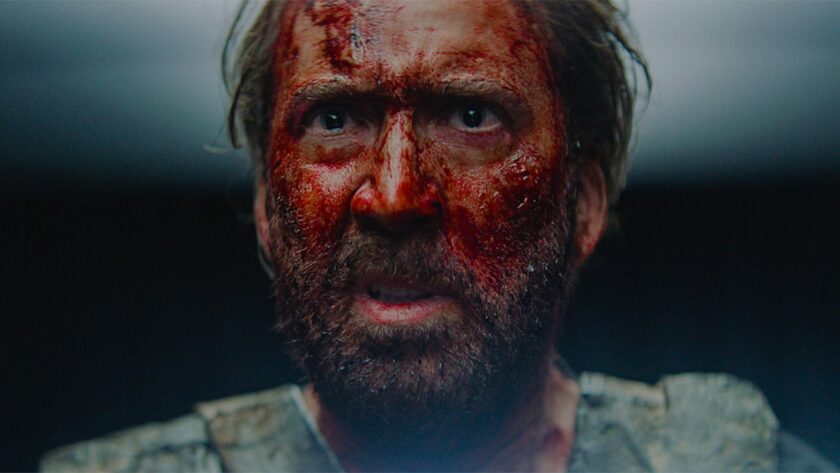It’s festival season! The FilmSoc blog is covering the 62nd BFI London Film Festival (10th – 21st October), diving into the myriad of films and events on offer to deliver reviews.
Pihla Pekkarinen reviews the blood-drenching and Nicolas Cage-starring heavy metal rampage.
“When I die, bury me deep, lay two speakers at my feet, put some headphones on my head, and rock and roll me when I’m dead.”
Before I walked into the cinema to see Mandy, I had never once seen someone walk out on a screening. But after the first half hour of this film, I had already been witness to five people just on my side of the cinema get up and leave. Mandy is far from bulk-standard. It is abrasive, unabashedly violent and therefore perhaps divisive. But if you allow yourself to succumb to its charm, in Mandy you find nothing less than a glorious, genre-bending, and delightfully gory homage to metal and hallucinogens.

Set in 1983 (the same year as Panos Cosmatos’ debut feature Beyond the Black Rainbow), Mandy is an 80’s cult thriller reimagined in the 21st century. The film is presented in two parts, split by the title card (which doesn’t appear until an hour in): the first half the murder, the second, the consequence. After his girlfriend Mandy (Andrea Riseborough) is killed by a horrifically violent cult led by Jeremiah Sands (Linus Roache), Red Miller (Nicolas Cage) goes on a rampant revenge spree against the cult members. The film idles for much of the first half, and my urge to step on the gas becomes more and more conspicuous as long takes seem to rule the earth while the minutes tick by. But what is lacking in energy in the first half is more than made up for in the second, wherein buckets of syrupy blood flow to the extent where you can practically feel the droplets hitting your face, and Cage’s brow seems permanently drenched in sweat. The adrenaline rush of the second half makes you grateful for the tranquility granted in the first, and you leave the cinema in a daze.
Throughout it’s two-hour running time, Mandy dips into the stylized worlds of a myriad of genres: thriller, slasher, horror, erotica, even animated dream sequences. And yet somehow, Cosmatos manages to maintain a golden thread throughout the feverish mania. Despite its patchworked nature, Mandy is far from messy. Cosmatos’s vision as a director is clean-cut and clear throughout, and the film comes across as a polished package, if drenched in blood and guts. Cosmatos, his cinematographer Benjamin Loeb and his editor Brett W. Bachman pack the film with texture: the trademark high grain footage, over-saturation and liberal use of the cross-dissolve give the film a layered feel. The film borrows and appropriates with a liberal hand, but with everything twisted and manipulated to fit Cosmatos’s vision, it resulted in what can only be described as a hallucination with a spreadsheet.

Among its other attributes, Mandy is also a tribute to music and metal culture. The opening credits are set to the languid tune of King Crimson’s “Starless”, a song pretty close to being the Citizen Kane of prog rock. The film contains almost no dialogue, and is instead driven by Jóhann Jóhannsson’s posthumous score, a gorgeous combination of moving melody and disturbing cacophony. Silence is also used sparingly to great effect. My favourite scene in the film comes right at the midpoint, where Nicolas Cage mourns his girlfriend by chugging a bottle of vodka and crying hysterically in his bathroom. The scene is one of only a few not set to music, and is both darkly funny and heart-wrenching as Cage delivers a convincing performance of unimaginable grief. Its naturalistic visuals and lack of music make it an obvious standout scene in the middle of Jóhannsson’s bass- and synthesizer-heavy metal-inspired score. (On a side note, other personal favourites include Cage snorting a virtual ant-hill of cocaine off of a shard of glass and Cage lighting a cigarette off of a burning decapitated head. Just so you get an idea.)
Mandy is, by no means, a perfect film. It’s self-indulgent and vaguely misogynistic, and on occasion, it even feels insecure in its own absurdism. There is a character in a camper van serving no purpose but to provide vague motivation for the mindless murder sprees of the central cult. The explanation (a highly potent form of LSD, apparently) only serves to disturb the illusion crafted by the film. Mandy exists in a very obviously nonsensical universe, and it doesn’t seem to serve any purpose for Cosmatos to prod at it. But the film’s high points far outshine its shortcomings. It is frenetic yet careful, senseless yet sensible, and pushes and pulls at all boundaries of genre. Whether you are charmed by the film’s nostalgic violence or not, one thing is inescapably clear: Mandy is the work of a visionary.
Mandy will be released in the UK on October 12th. Check out its trailer below:




